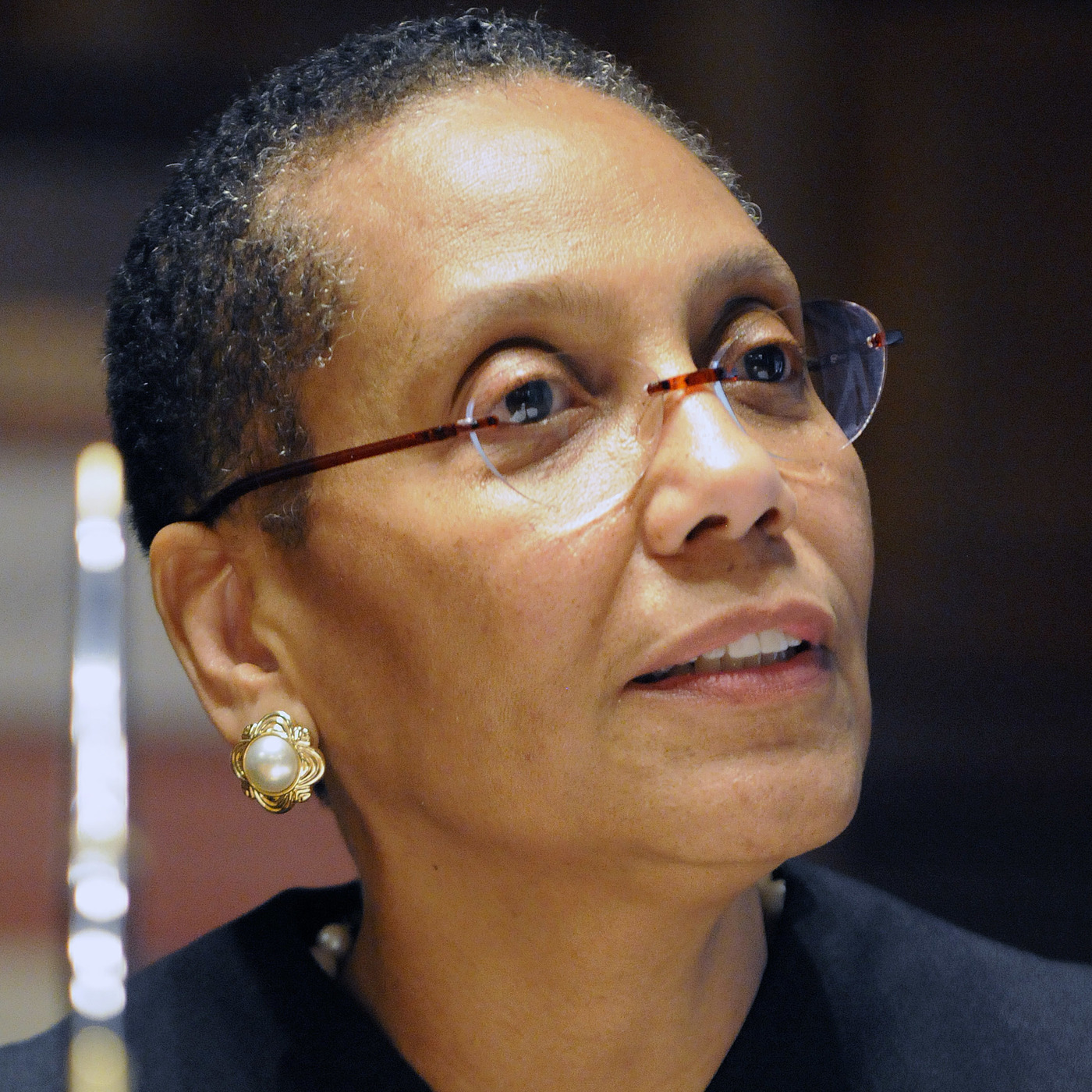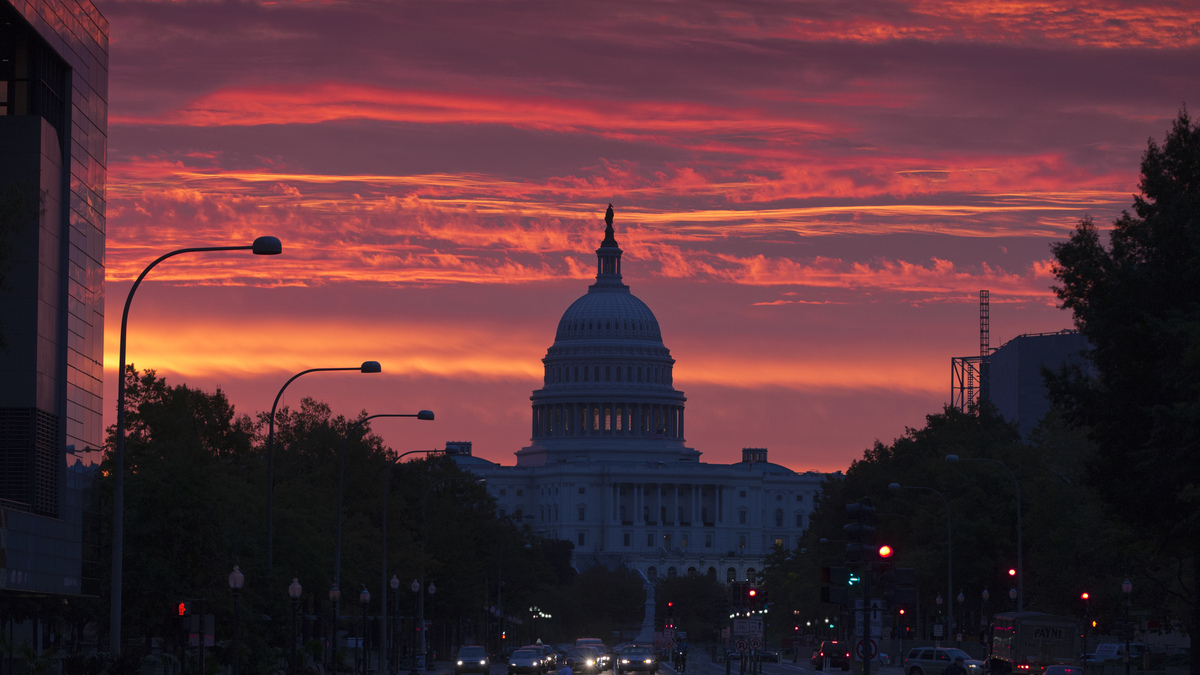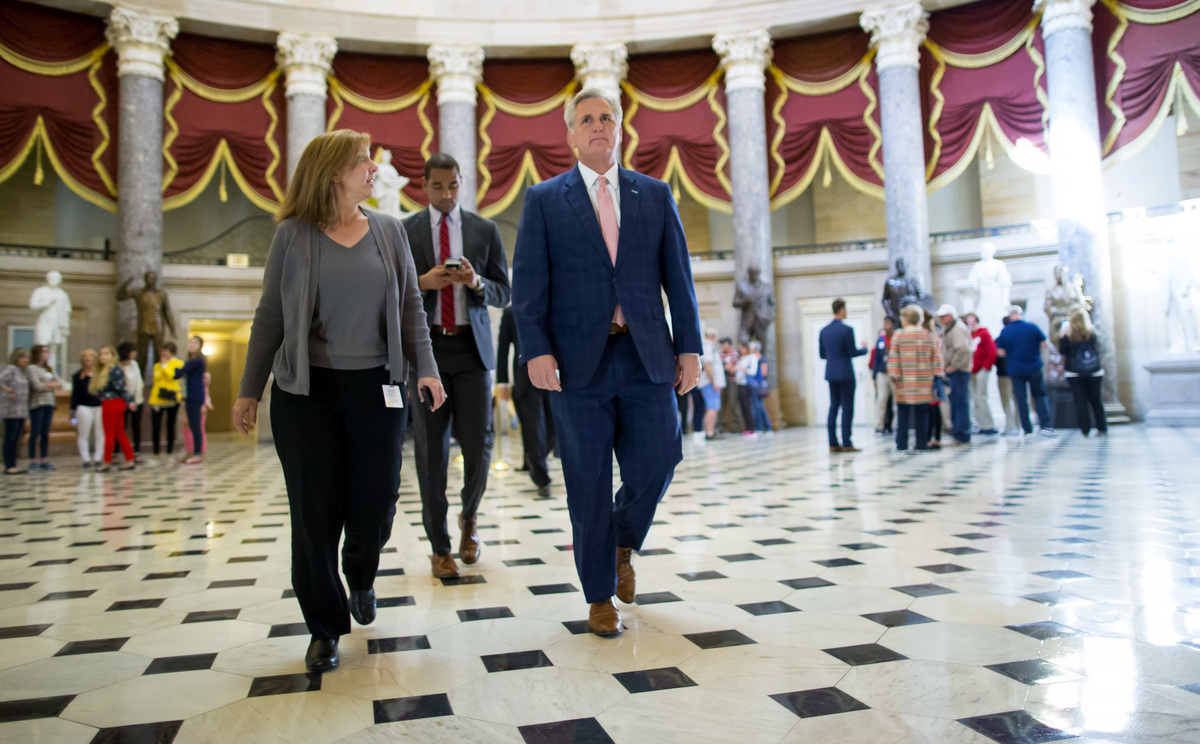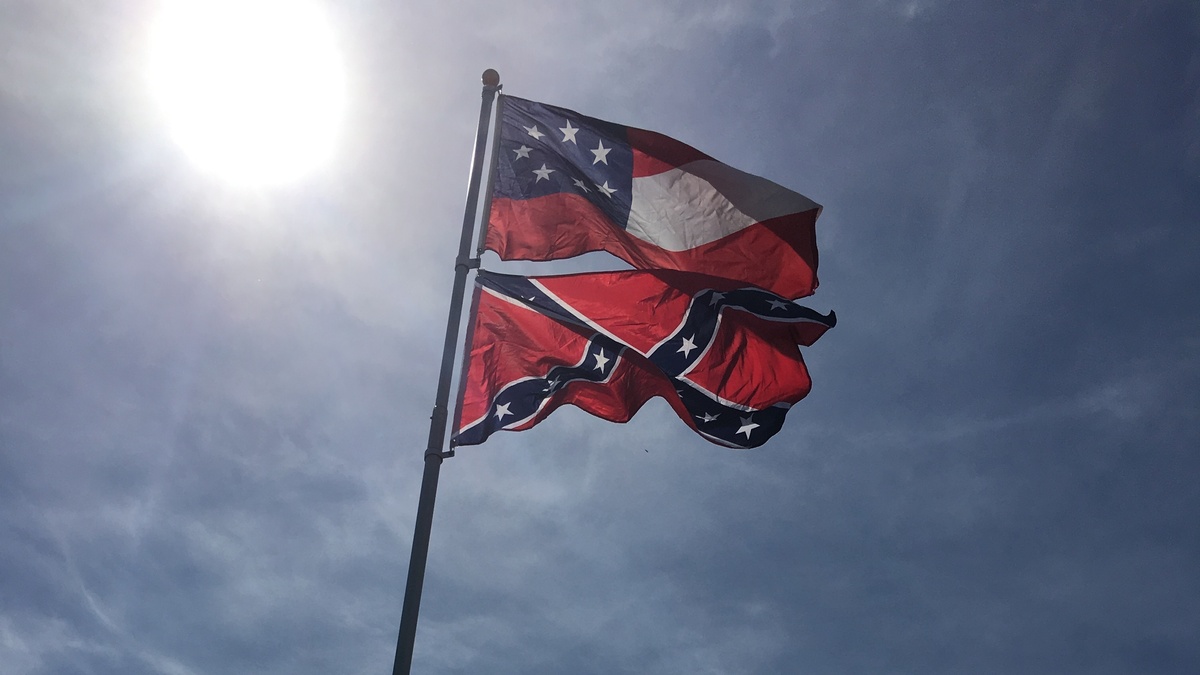
A worker takes a break after planting young Cosmic Crisp trees in an orchard near Wenatchee, Wash. Dan Charles/NPR hide caption
Get ready for a new kind of apple. It's called Cosmic Crisp, and farmers in Washington state, who grow 70 percent of the country's apples, are planting these trees by the millions. The apples themselves, dark red in color with tiny yellow freckles, will start showing up in stores in the fall of 2019.
Scott McDougall is one of the farmers who's making a big bet on Cosmic Crisp.
"It goes back to believing in the apple," he says.
"You believe?" I ask.

The Salt
Sweet. Tart. Crunchy: How To Engineer A Better Apple
"I believe!" he says, and chuckles.
Planting has begun at one of his company's orchards near the city of Wenatchee. It's a spectacular site — a giant natural amphitheater in the hills above the Columbia River.
As we watch, a slow-moving tractor slices open the bare earth, and two men carefully lower delicate tree roots into the opening, one tree every three feet. These are among the first of about 400,000 Cosmic Crisp trees that McDougall and Sons expects to plant over the next few years. Across the state, 12 million of the trees have been ordered. That first wave of plantings will deliver about 5 million 40-pound boxes of Cosmic Crisp apples to grocery stores.
"Hitting 5 million boxes right away, that's never happened with any other variety that we've ever planted in Washington state," McDougall says.
For comparison, it took the popular variety Honeycrisp 20 years after it was introduced to reach that level of production.

These apples put out for a taste test are Honeycrisp (from left), Jazz, Gala, Red Delicious and Cosmic Crisp. Dan Charles/NPR hide caption
Why this phenomenal success? First of all, the apple tastes great, even after months in storage, McDougall says. But that's not the only reason.
A lot of apple farmers in Washington have been looking to switch from the varieties that they've grown for decades — in particular, Red Delicious. That variety is still the single most widely grown apple in the state, but it's fallen out of favor with American consumers. Prices have sometimes fallen so low that growers simply discarded part of their harvest.

The Salt
Inside The Life Of An Apple Picker
Many potential alternatives, though, have problems of their own. Honeycrisp is loved by consumers but is difficult to grow. Many other hot new apples, like Opal or Jazz, are only available to small clubs of growers.
Cosmic Crisp, though, is open to every farmer in Washington state. The tree is vigorous and produces lots of fruit. Also, it's ready for harvest at that same time as Red Delicious, which is a crucial consideration for big-time apple growers who are trying to coordinate the harvest of several different varieties.
"You've kind of got the best of all worlds," McDougall says.

Patent holder Bruce Barritt stops by the mother of all Cosmic Crisp trees. Cosmic Crisp was the result of breeding project at Washington State University in the 1990s. Dan Charles/NPR hide caption

Patent holder Bruce Barritt stops by the mother of all Cosmic Crisp trees. Cosmic Crisp was the result of breeding project at Washington State University in the 1990s.
Dan Charles/NPRThe man who's listed on a patent as the inventor of Cosmic Crisp, Bruce Barritt, drove five hours from Canada to see these trees go into the ground.
Barritt is 74 years old now. He takes pictures of the newly planted trees like a proud parent.
"They are my children," he says. "Just like your kids who are 18 years old, we don't know a lot about them yet. Four years from now, we'll know whether they're the real thing."

Washington state hired a private company to handle the commercial launch of the new apple. They named it Cosmic Crisp because the apple's flecks of yellow reminded someone of stars in the sky. Courtesy of Bruce Barritt hide caption
Two decades ago, when Barritt was working for Washington State University, he persuaded the university and the state's apple industry to pay for an effort to create new and tastier apple varieties.
"We knew that it would be about 20 years before we had anything of significance — if we were lucky!" he says.
He started the work of apple breeding — first taking pollen from blossoms of some trees and fertilizing the blossoms of others, creating thousands of new genetic combinations. Then he collected the apples that resulted from this cross-fertilization and grew new little trees from their seeds. He watched those trees produce their own apples, all different from one another. "Some green ones, some yellow ones, some red ones. Some little ones, some big ones," Barritt recalls.
Barritt says he'd spend days walking those rows, searching for a superior apple. Hundreds of times each day, he'd take a bite. "Your taste sensors, sugar and acid, kick in, and you'll either enjoy it or you won't. And then you spit it out," he says.
He doesn't remember the day in 1997 when he took a bite of an apple from the tree that was labeled WA 38. But it must have made a good impression because he and his colleagues kept it around.

The Salt
Want To Grow These Apples? You'll Have To Join The Club
It's still there, in a research orchard near Wenatchee. Most of the orchard is filled with rows of young seedlings, the latest products of Washington state's breeding program. At the far end of the orchard, though, stands the original WA 38 "mother tree."
Every one of the millions of Cosmic Crisp trees now growing in orchards and nurseries is a clone of this tree.
Barritt and his colleagues duplicated it the old-fashioned way, cutting buds from its branches and splicing, or grafting, those buds onto existing apple tree roots. The buds grew into new WA 38 trees.

The Salt
'Paradise Lost': How The Apple Became The Forbidden Fruit
For almost two decades, people in the apple industry studied those trees, tasting the apples. The more they learned, the more they liked it.
Tom Auvil, who worked for the Washington Tree Fruit Research Commission, says that when they took boxes of different varieties to events with apple growers, it was the box of WA 38 that got cleaned out. "This happened every year," he says. "We never bring any WA 38 home."
Auvil says the apple has that sought-after crisp, cracking sensation when you bite into it. It has sweetness and acid; almost a sensory overload for your tongue.
Washington state hired a private company to handle the commercial launch of the new apple. They named it Cosmic Crisp because the apple's flecks of yellow reminded someone of stars in the sky. Farmers finally got a chance to plant these trees in their own orchards this spring. For now, it's only available to farmers in Washington, since they helped support the breeding program that created it.

The Salt
There's Much More To Apples Than What Meets The Eye
The flood of orders has astonished almost everybody in the industry. In fact, it's provoking some anxiety. After all, consumers haven't even seen Cosmic Crisp yet. Nobody really knows if they'll like it.
Tom Auvil, who's been a Cosmic Crisp booster, calls the wave of orders "just an amazing level of investment. I just hope somebody doesn't drive up my driveway and say, 'You got me into this, now get me out of it!' "
A few years from now, when stores are full of Cosmic Crisp apples, those farmers will find out whether this was a smart bet.









































